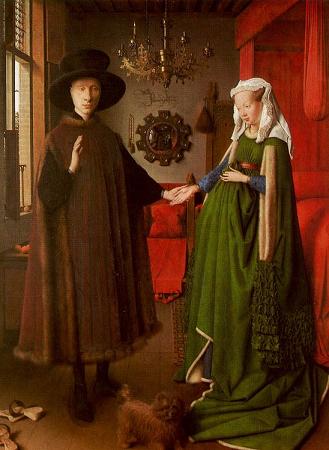Pietro Perugino (1450 - 1523). Pietro Perugino, born Pietro Vannucci, was an Italian Renaissance painter of the Umbrian school, who developed some of the qualities that found classic expression in the High Renaissance. Raphael was his most famous pupil. He was born Pietro Vannucci in Città della Pieve, Umbria, the son of Cristoforo Maria Vannucci. His nickname characterizes him as from Perugia, the chief city of Umbria. Scholars continue to dispute the socioeconomic status of the Vannucci family. While certain academics maintain that Vannucci worked his way out of poverty, others argue that his family was among the wealthiest in the town. His exact date of birth is not known, but based on his age at death that was mentioned by Vasari and Giovanni Santi, it is believed that he was born between 1446 and 1452. Pietro most likely began studying painting in local workshops in Perugia such as those of Bartolomeo Caporali or Fiorenzo di Lorenzo. The date of the first Florentine sojourn is unknown; some make it as early as 1466/1470, others push the date to 1479. According to Vasari, he was apprenticed to the workshop of Andrea del Verrocchio alongside Leonardo da Vinci, Domenico Ghirlandaio, Lorenzo di Credi, Filippino Lippi and others. Piero della Francesca is thought to have taught him perspective form. In 1472, he must have completed his apprenticeship since he was enrolled as a master in the Confraternity of St Luke. Pietro, although very talented, was not extremely enthusiastic about his work. Perugino was one of the earliest Italian practitioners of oil painting. Some of his early works were extensive frescoes for the convent of the Ingessati fathers, destroyed during the Siege of Florence; he produced for them also many cartoons, which they executed with brilliant effect in stained glass. A good specimen of his early style in tempera is the tondo in the Musée du Louvre of the Virgin and Child Enthroned between Saints. Perugino returned from Florence to Perugia, where his Florentine training showed in the Adoration of the Magi for the church of Santa Maria dei Servi of Perugia. In about 1480, he was called to Rome by Sixtus IV to paint fresco panels for the Sistine Chapel walls. The frescoes he executed there included Moses and Zipporah, the Baptism of Christ, and Delivery of the Keys. Pinturicchio accompanied Perugino to Rome, and was made his partner, receiving a third of the profits. He may have done some of the Zipporah subject. The Sistine frescoes were the major high Renaissance commission in Rome. The altar wall was also painted with the Assumption, the Nativity, and Moses in the Bulrushes. These works were later destroyed to make a space for Michelangelo's Last Judgement. Between 1486 and 1499, Perugino worked mostly in Florence, making one journey to Rome and several to Perugia, where he may have maintained a second studio. He had an established studio in Florence, and received a great number of commissions. His Pietà in the Uffizi is an uncharacteristically stark work that avoids Perugino's sometimes too easy sentimental piety. According to Vasari, Perugino was to return to Florence in September 1493 to marry Chiara, daughter of architect Luca Fancelli. The same year, Perugino made Florence his permanent home once again, though he continued to accept some work elsewhere. In 1499 the guild of the cambio of Perugia asked him to decorate their audience-hall, the Sala delle Udienze del Collegio del Cambio. The humanist Francesco Maturanzio acted as his consultant. This extensive scheme, which may have been finished by 1500, comprised the painting of the vault, showing the seven planets and the signs of the zodiac, and the representation on the walls of two sacred subjects: the Nativity and Transfiguration; in addition, the Eternal Father, the cardinal virtues of Justice, Prudence, Temperance and Fortitude, Cato as the emblem of wisdom, and numerous life-sized figures of classic worthies, prophets and sibyls figured in the program. On the mid-pilaster of the hall Perugino placed his own portrait in bust-form. It is probable that Raphael, who in boyhood, towards 1496, had been placed by his uncles under the tuition of Perugino, bore a hand in the work of the vaulting. Perugino was made one of the priors of Perugia in 1501. On one occasion Michelangelo told Perugino to his face that he was a bungler in art: Vannucci brought an action for defamation of character, unsuccessfully. Put on his mettle by this mortifying transaction, he produced the masterpiece of the Madonna and Saints for the Certosa of Pavia, now disassembled and scattered among museums: the only portion in the Certosa is God the Father with cherubim.
more...














